13 Activities and Lessons to Teach Potential and Kinetic Energy
Use these free lesson plans and hands-on activities to explore potential and kinetic energy with students!
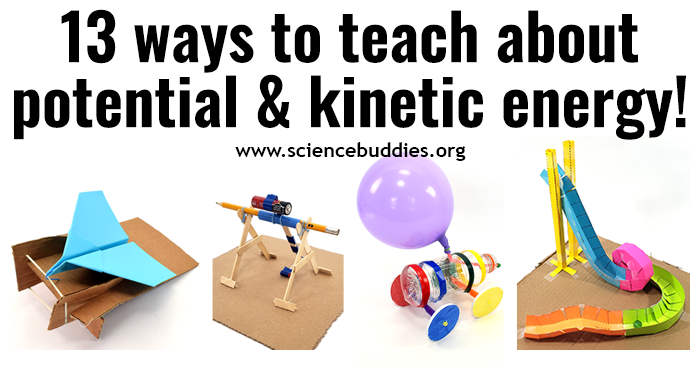
What happens when you stretch a rubber band and let it go? Why? Explaining how energy is stored and transferred and how that relates to the movement and momentum of objects in motion involves understanding potential and kinetic energy. This is an area of science where getting hands-on with the storage, transfer, and release of energy really helps students connect with what is happening. When students stretch something, and it flies into the distance, or roll a marble down a paper roller coaster and watch to see if it can travel up the incline of a loop, they see the science in action and can investigate, hands-on, how changing different variables affects the speed, distance traveled, or momentum of an object.
These activities and NGSS-aligned lesson plans help educators create hands-on learning opportunities to teach about potential and kinetic energy in the classroom, as part of remote learning, or for independent or family exploration at home.
Note: Science Buddies Lesson Plans contain materials to support educators leading hands-on STEM learning with students. Lesson Plans offer NGSS alignment, contain background materials to inspire confidence in teachers even in areas that may be new to them, and include supplemental resources like worksheets, videos, discussion questions, and assessment materials.
13 Lesson Plans and STEM Activities to Teach About Potential and Kinetic Energy
1. Paper Roller Coasters
With the Paper Roller Coasters: Kinetic and Potential Energy lesson (or activity), students build their own model paper roller coasters and explore how conservation of energy applies in terms of gravitational potential energy, kinetic energy, and friction. What determines if a marble can make it from the start of the roller coaster to the end? Can it do a loop?
2. Popsicle Stick Catapult
In the Build a Popsicle Stick Catapult activity, students use popsicle sticks and craft materials to build a small catapult and then explore the role of potential and kinetic energy in launching a cotton or paper ball. Can they use what they learn about energy to successfully launch at a target or over a "castle" wall?
3. Popsicle Stick Chain Reaction
With the Popsicle Stick Chain Reaction activity, students make an interlocked chain of tongue depressor sticks. Each stick they place in the chain adds energy. It takes patience to set up the chain, but the final chain reaction is exciting!
4. Paper Airplane Launcher
With the Design a Paper Airplane Launcher lesson, students learn about potential and kinetic energy as they use the engineering design process to build a paper airplane launcher. (An activity is also available for informal use.)
5. Paper Ball Run
The Paper Ball Run Challenge project challenges students to use paper and tape to build a paper ball run for a ping pong ball. A cross between a roller coaster and a marble run, the paper ball run invites a wide range of approaches to the shape, size, and design. Students will use their understanding of potential and kinetic energy as they find ways to "slow down" the path of the ball so that it takes as long as possible to get from start to finish.
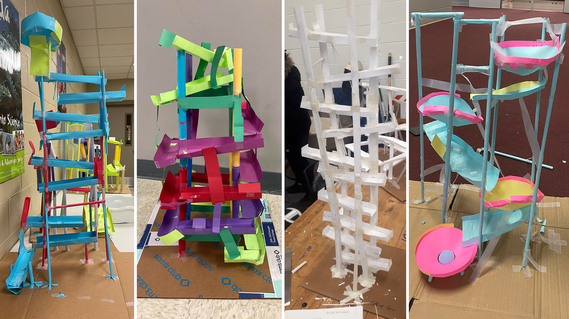
6. Wall Marble Run
In the Build A Wall Marble Run activity, students learn about potential and kinetic energy while building a wall marble run out of recycled materials and empty toilet paper or cardboard tubes. Understanding how energy works is key to designing a successful marble run!
7. Rubber Band-Powered Car
With the Build a Rubber Band-Powered Car activity, students design and build a car with wheels made from compact discs (CDs) and an axle that uses a rubber band to store and release energy. They learn about potential and kinetic energy as they wind up the axle and test to see how far the car goes.
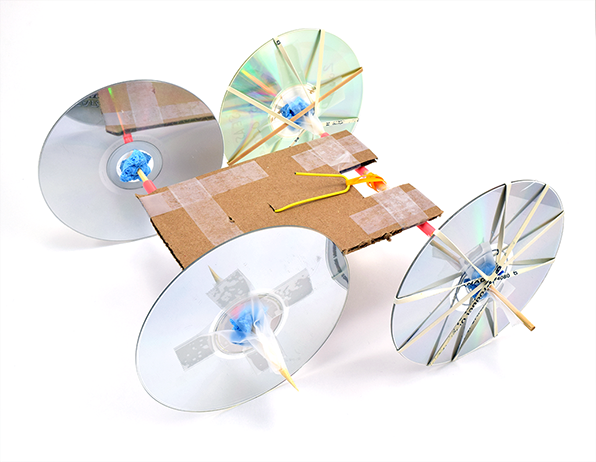
8. Marble Roller Coaster
In the Build a Marble Roller Coaster activity, students use foam tubing to build a different kind of roller coaster than the paper one. It is easy to design loops with the tubing, but understanding energy has a lot to do with whether a marble can make it from start to finish.
9. Mini Trebuchet
With the Build a Mini Trebuchet activity, students use popsicle sticks, rubber bands, and other common materials to build a small trebuchet. In the Middle Ages, a trebuchet was a larger siege machine than a catapult. How does energy get stored and released when a trebuchet launches?
10. Ping Pong Catapult
With the Ping Pong Catapult lesson, students experiment with the Ping Pong Catapult to explore potential and kinetic energy by launching ping pong balls. (There are multiple student projects that use the Ping Pong Catapult and might also be useful in your classroom exploration.)
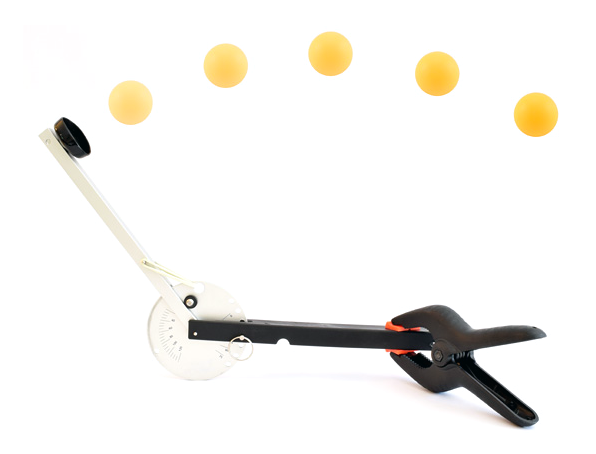
11. Cotton Ball Launcher
With the Make a Cotton Ball Launcher activity, students use recycled toilet paper or cardboard tubes to build a fun launch device.
12. Balloon Car Lesson Plan
With the Balloon Car Lesson Plan lesson or activity, students design, build, and race balloon-powered cars. What design choices will result in the most available energy for the car?
13. Swinging Pendulum
With the Swinging Pendulum lesson, students learn how energy is converted from potential to kinetic and back again by studying the movement of a pendulum. What does the height of the swing have to do with the energy?
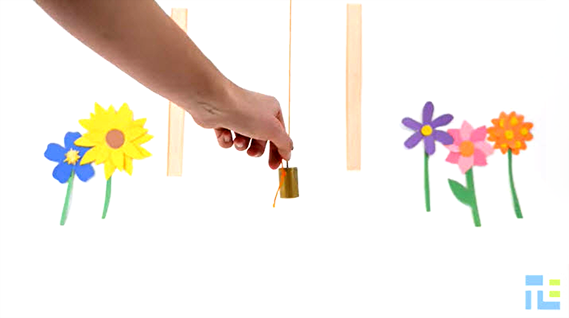
Related STEM Resources
For additional educator resources to teach about types of energy, the law of conservation of energy, forces, and motion, see:
- Teach About Newton's Laws of Motion
- 26 Science Projects and Experiments To Teach About Types of Energy
- Forces and Laws of Motion Lessons
Thematic Collections
Collections like this help educators find themed activities in a specific subject area or discover activities and lessons that meet a curriculum need. We hope these collections make it convenient for teachers to browse related lessons and activities. For other collections, see the Teaching Science Units and Thematic Collections lists. We encourage you to browse the complete STEM Activities for Kids and Lesson Plans areas, too. Filters are available to help you narrow your search.
Categories:
You Might Also Enjoy These Related Posts:
- Teach Genetics and Heredity with Free STEM Lessons & Activities - Genetics Science Projects
- 25+ Robotics Projects, Lessons, and Activities
- 15 Density Science Experiments
- Teach Chemical Reactions - 20+ Chemistry Lessons and Activities
- Forces and Laws of Motion Lessons
- Mars Rover Landing: Space Science & Mars STEM Lessons and Activities
- 26 Science Projects and Experiments To Teach About Types of Energy
- 13 Lessons to Teach About the Chemistry of Mixtures and Solutions


















